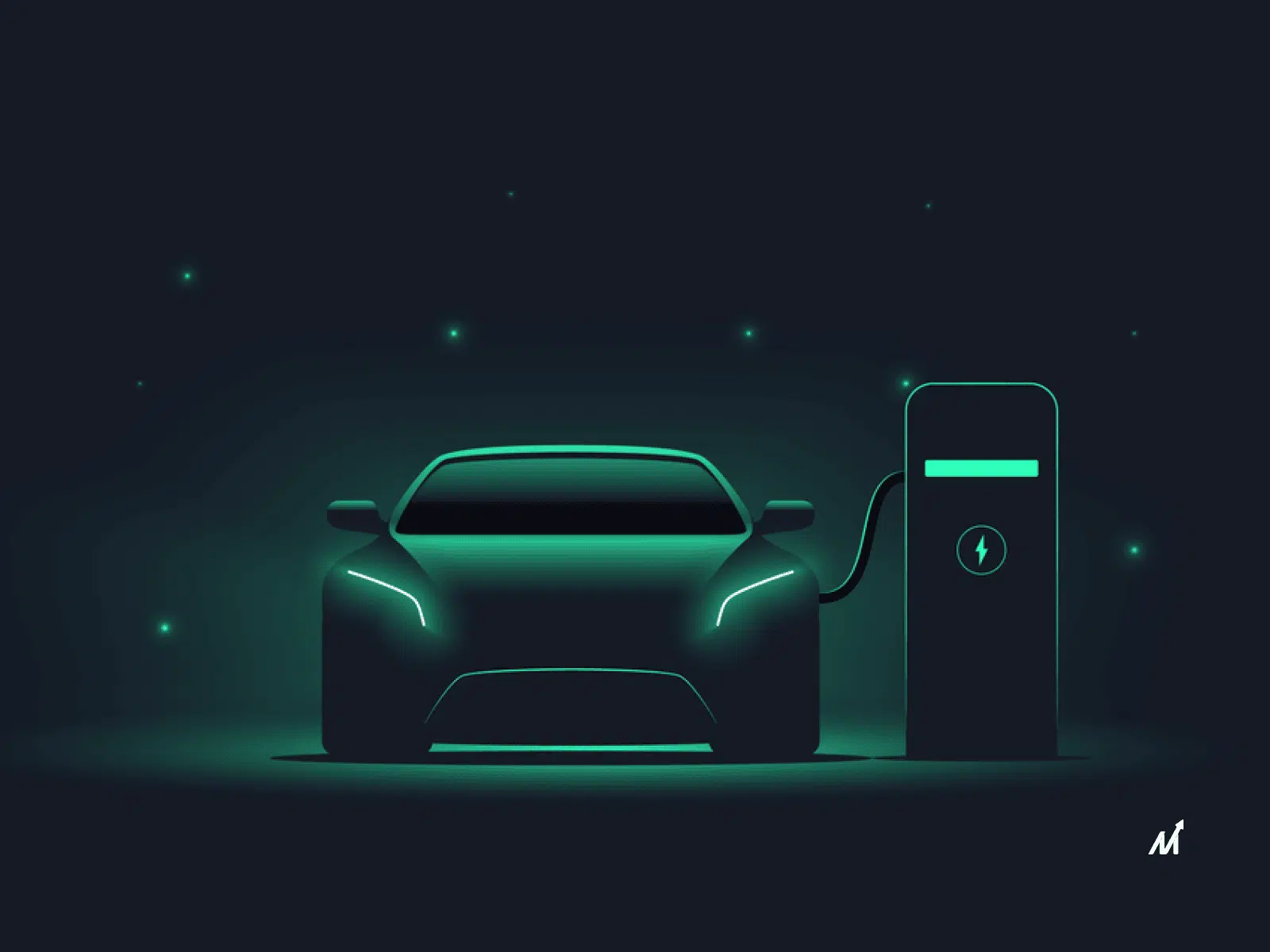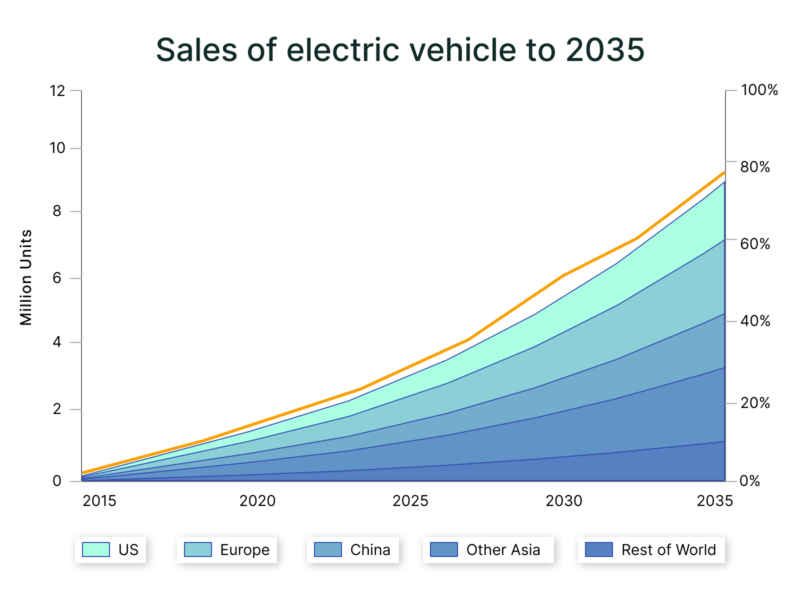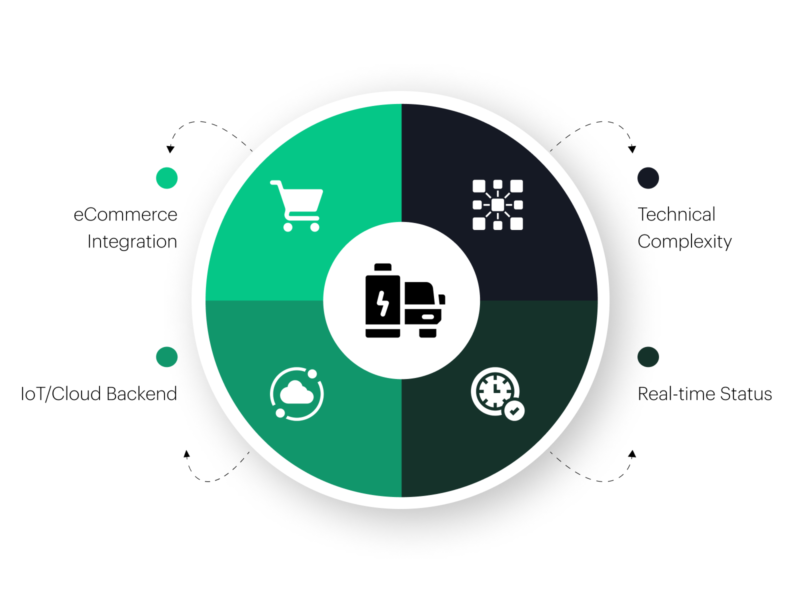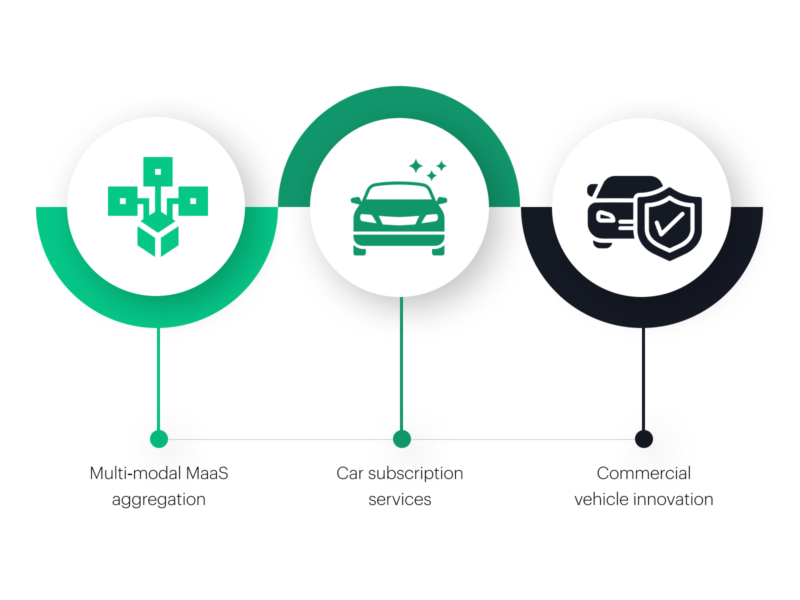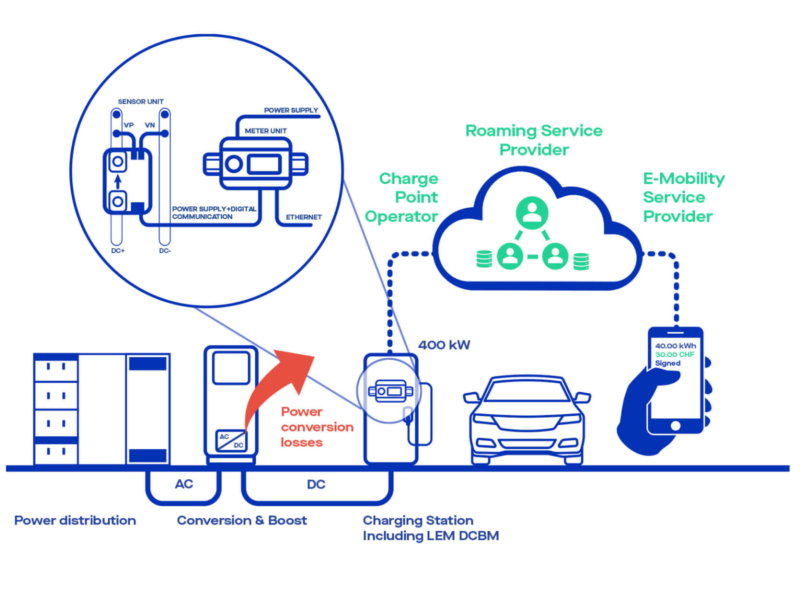EV Charging Standards: Introduction
EV Charging Standards: Mobile applications are emerging as potent tools that can captivate EV customers and advance the cause of cleaner, more sustainable transportation. Consumer interaction helps reveal (or uncovers) the many benefits and issues of EVs, allowing them to be addressed properly.
Many governments, counties, and businesses have established 2030 as an electrification target. The United States plans to have 50% of its vehicles be electric by 2030. Several countries have declared that ICE sales will cease entirely by 2030. A couple of OEMs have also pledged to do the same. However, cities such as Oslo have already achieved an EV majority.
The current scope of the EV-specific mobile marketplace includes, among other services:
- Pre-sale customer information
- Charging information and control
- EV-specific navigation capabilities
The market is, however, very fragmented, with apps delivering specific information and employing various approaches.
Furthermore, we discovered that the impediments to more usable apps include a lack of APIs (application programming interfaces) for vehicles and chargers, data availability, dependability, format, and types, and proprietary payment and invoicing methods.
There are numerous options accessible, but the EV industry provides an expanding number of prospects for mobile app development. App developers, for example, can concentrate on solutions that permit EV authentication and subsequent payment at charging stations.
By 2035, Most Automotive Markets Will Switch To Electric
Globally, we anticipate that EV (BEV, PHEV, and FCEV) adoption will reach a 45% level within the expected regulatory targets. Even still, the projection for EV growth falls well short of what is necessary to get net zero emissions. By 2030, sales of passenger cars will need to be 75% EV, which is a massive increase over the industry’s present trajectory and rate.
As the largest EV market in absolute terms, China will also continue to experience rapid electrification growth. Despite modest EV subsidies and the lack of a formal ICE sales termination date, uptake is the consequence of significant consumer pull. But the dual-credit policy of the government has raised the share of EVs in OEMs’ portfolios. In the expedited scenario for 2030, the adoption modeling predicts that China will sell more than 70% of all new cars.
The Biden administration in the US has made significant expenditures on charging infrastructure, a 50% electrification target for 2030, and stricter fleet emissions objectives. The adoption of EVs will mainly be influenced by regulatory support in California and other states that adhere to its CARB ZEV rule. In the accelerated scenario, the US will surpass current regulatory targets and reach 65% EV sales by 2030, which assumes that US OEMs will support electrification targets and have declared ICE bans by 2035.
EV Charging Standards: Market Stats
The market size for EV chargers is projected to grow from $3.8 billion in 2019 to $25.5 billion by 2027, reflecting a Compound Annual Growth Rate (CAGR) of 26.8%. For the improvement of its country’s electric charging stations, China has invested about USD 2.4 billion in the expansion of cutting-edge technologies.
According to the policies, the global EV stock will reach nearly 140 million vehicles by 2030, accounting for 7% of the worldwide vehicle fleet. It follows that traditional original equipment manufacturers (OEMs), the most recent OEMs to enter the market, captive investment organizations, and dealerships will all face new hurdles in the near future.
These are some of the key characteristics that influence market dynamics.
- The limitation is the high Initial Cost for fast chargers
- Challenge is charging time and plug kind
- Drive the low charging prices
During the forecast period beginning in 2027, the Level 2 charging component is anticipated to represent the most significant portion.
EV Charging Standards App Development: Key Factors
While creating an app for EV charging, the following factors should be taken into account:
1. IoT/Cloud Backend
Many telemetry data and service requests are produced during EV charging sessions. IoT and cloud backend infrastructure are required to continuously monitor and guarantee the high availability of charging services. The charging app must be tightly integrated with backend services to ensure it generates notifications for important information.
Further Read: 6 Steps To Kick-Start IoT App Development For Your Business
2. eCommerce Integration
The EV charging standards app should have chatbot support, CRM connection, payment gateways/digital wallets, and other features to enable a seamless charging and payment experience. While developing the app, additional crucial elements to attracting and keeping frequent users are rewards points, memberships, and discounts.
3. Technical Complexity
The sophisticated processes used by the EV charging standards app involve the management of EVSE hardware and software elements. For instance, setting up a charger, choosing a port type, smartphone-based user identification, alert generating, and integrating various connectivity options and protocols are just a few examples. When building an intuitive app and considering the effects of each parameter, it is critical to have this understanding.
4. Real-time Status
Apps for EV charging must always function flawlessly and display real-time information on battery charging status, energy prices, available sites, etc. While creating and testing an app, developers must also consider cellular connectivity and limited bandwidth.
EV Charging Standards: Mobility Services Landscape
1. Multi‑Modal MaaS Aggregation
There are several instances worldwide when clients can use one payment platform to travel via various means of transportation. New, integrated private/public versions of these services are emerging, although they usually are only available on public transit. Customers can use a single app to plan and pay for individual trips by rail, bus, taxi, car rental, and bike sharing or buy an “all-in” subscription that covers all of their transportation requirements in the city for a set amount.
Despite these promising advancements, public authorities continue to face challenges attempting to strike a balance between the MaaS user experience and the policy goals of economic growth, social inclusion, space optimization, environmental benefit, and citizen health and wellness.
2. Car Subscription Services
We have witnessed innovation in new car subscription services during the past year. Subscription services could provide a “middle ground” for consumers who still desire full-time access to a car and the flexibility to switch models or “pause” their usage at any moment. Consumers are becoming more and more enticed to forgo personal vehicle ownership in favor of more flexible access.
OEMs and independent platforms are introducing new subscription models, and new business and operating models are also being tested. These plans offer OEMs a solid chance to keep their connections with customers and regain control from on-demand platform providers.
3. Commercial Vehicle Innovation
Examining the advantages of mobility shouldn’t neglect commercial vehicles and logistics, despite the frequent emphasis on passenger transport. Their economic and sustainability impact is enormous.
With the emergence of peer-to-peer logistics platforms, consignment sharing, and novel delivery methods like drones, business models are constantly evolving (as tested by several prominent technology players). Although alternative fuels, connectivity, and automation should eventually impact the majority of the supply chain, we anticipate an early concentration on lower emissions for heavier trucks and improvements in last-mile delivery.
How Does An EV Charging Station Use The OCP Protocol?
The Open Charge Point Protocol is OCPP. It is an application protocol that enables communication between the management systems of charging stations and the stations themselves.
Upon activation of the charging station, the OCPP initiates a connection attempt with the management software. The software confirms the identity of the charging station. After successfully verifying the EV charging station, the IT backend transmits a signal to the management system indicating its availability. In its reply, the station gives the time and date along with its current condition.
Authorization begins when a user requests to start charging. The system unlocks the power supply nozzle in response to the request and plugs it into the e-vehicle to start charging. At this stage, OCPP sends another transaction message that the charging process has started.
The smartphone app verifies the user’s identity at the charging station when they want to stop charging. Charging stops when the station receives the Stop-transaction message, and the user is then ready to leave.
The OCP protocol has numerous advantages for EV charging standards:
- Smart charging
To maximize its performance, the charging station automatically adjusts the power supply.
- Data transmission
Between various mobile apps, management programs, and EV charging stations, OCPP facilitates data sharing.
- Diagnosis
It foresees problems in advance and delivers warnings. It also offers the option to diagnose and fix issues remotely.
- Reporting
OCPP provides system administrators with a full report on the charging station’s state during use.
EV Charging Standards: Conclusion
Apps for EV charging standards have made it possible for automakers and providers of e-Mobility services to connect and comprehend how consumers use EVs and related charging services.
EV charging apps produce qualitative and quantitative data, including locations, payment options, and evaluations (charging time, usage patterns, battery state, etc.). Thanks to this data-driven strategy, they have a unique opportunity to innovate their offerings and evolve their services continuously.

